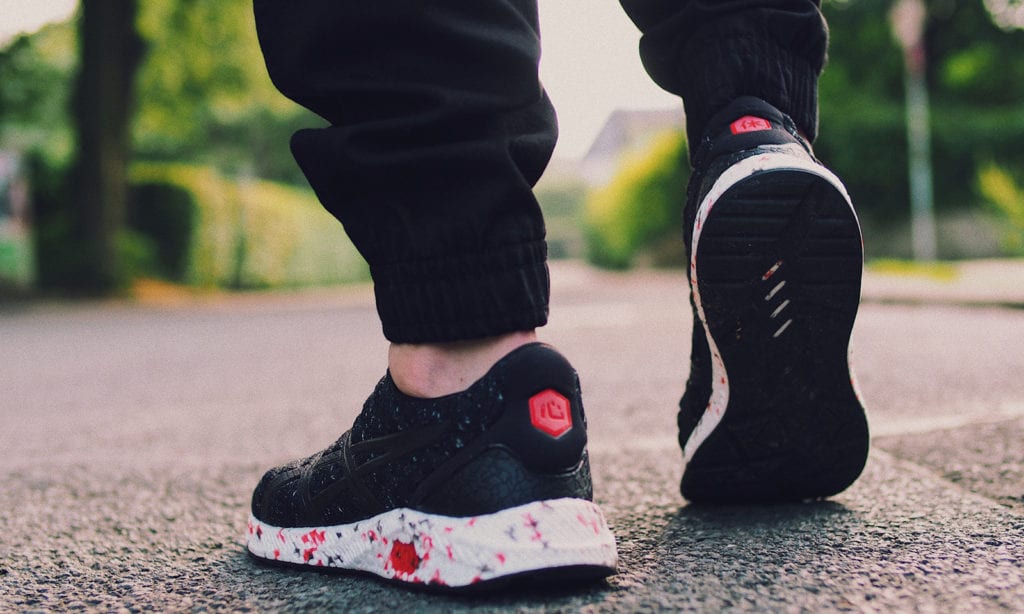Different Shoe Sole Types to Know About

Believe it or not, when shoes were first made, many centuries ago, the sole was a strip of fabric which was then tied to the upper material, be that leather or fabric, with a length of fabric or lace. It was designed to be flexible and provide a small amount of protection for the sole of your feet, but we must remember that before the creation of shoes, human feet withstood all terrains and temperatures, so their feet were literally made of tougher stuff than ours are now.
Over the centuries, footwear design has evolved to give a huge range of functions from our shoes, from stylish to practical and everything in between, and one thing we quite often overlook in a new pair of shoes in the outsole. Shoe soles are important when considering what it is you are looking to purchase but are often only looked at for specific types of shoes when looking at resistance for running shoes as an example or tread pattern for boots in winter. We think outsoles should be a much more important part of your footwear choice, and so we have compiled information about the different shoe soles available to help you to understand what you are buying.
Rubber Soles (RB)
If, when purchasing a new pair of shoes, you see them stamped RB, you can be confident that these soles have been made with recycled or hot press rubber. The process of creating a shoes sole in this method is to grind and shorten the rubber to fit the upper. It also makes the sole waterproof and allows flexibility. This is great for breaking shoes in quickly when first bought, but can sometimes leave your shoes feeling heavier than a more lightweight product, so do consider what your intended purpose is for a rubber-soled purchase.
Polyurethane Soles (PU)
Polyurethane soles are favored by designers because they are affordable, shock-absorbent, and waterproof. They are a preference of those who have jobs standing for extended periods as they have good slip resistance and low density, meaning you can move quickly and easily in them while being confident of your footing.
EVA Outsoles
Full name Ethylene Vinyl Acetate, EVA is described as being one of the best shock absorbent materials available on the market today, and being so comfortable that it is used throughout some designs or even for the entire product of footwear. Used primarily for outsoles with expected heavy use EVA is preferred because it is durable, lightweight, and flexible in addition to lending itself well to coloring.
TRP Soles
TRP stands for Thermoplastic Rubber and has been in use since 1975, and is created by molding rubber granules from solid raw materials that are heated to create the sole. Some companies will use shredded car tires to create the granules which give an excellent level of shock absorbency and great quality of rubber for durability and resistance. However, our experience of this type of sole is that they can become uncomfortable over time. We, therefore, recommend this type of rubber sole more for outdoor hiking and trekking than for a work boot if you spend hours on your feet each day.
PVC Outsoles
Polyvinyl Chloride (PVC) is useful for more than just pipework. Used in place of leather, PVC has great insulation properties for soles and is also more cost-effective for manufactures, so cheaper for you to purchase. PVC can be molded to make any sole design a manufacturer could imagine and will withstand long periods on your feet due to the level of shock absorbency in this material while giving great support to your feet.
BPU
An updated version of PU, BPU has been lauded for how environmentally friendly it is in comparison to the older material and has a great low density to make the wearing experience more comfortable. BPU also has a reputation for being one of the most durable materials available for all soles, both for boot soles and shoe soles, and has been substituted in place of rubber due to the weather resistance of BPU. This is an excellent choice if your job includes standing outdoors for prolonged periods or if you like activities that will make you spend more time outdoors, and you prefer something other than rubber soles.
ABS
ABS (Acrylonitrile Butadiene Styrene) is the newest available sole shoe manufacturers are using, and although relatively new, it is well thought of in the profession. It is a type of plastic that is tough, durable, and contains no toxins, so it is safe for use anywhere. Well-liked because of the resistance, stability when wearing, and molding when being crafted, this is one to watch for the future. However, in our experience, the weather resistance of ABS is not like anything else we have seen and will not stand up to the outdoor elements for any period. Making ABS a great sole for indoor work but not easy to like as an outdoor walking shoe. Also, be careful if wearing this sole in a hot environment as it has low thermal deformation, and you could find over long use that the sole will bend out of shape.
The next decision after choosing the sole is the upper fabric that you prefer, whether this is leather or fabric, and our recommendation for this is to decide based on what you need the product for. All of the materials we have discussed above have their pros and cons based upon the use of the product and personal preference. However, now that you have more information about each type of sole, you will be able to make more informed purchasing decisions.